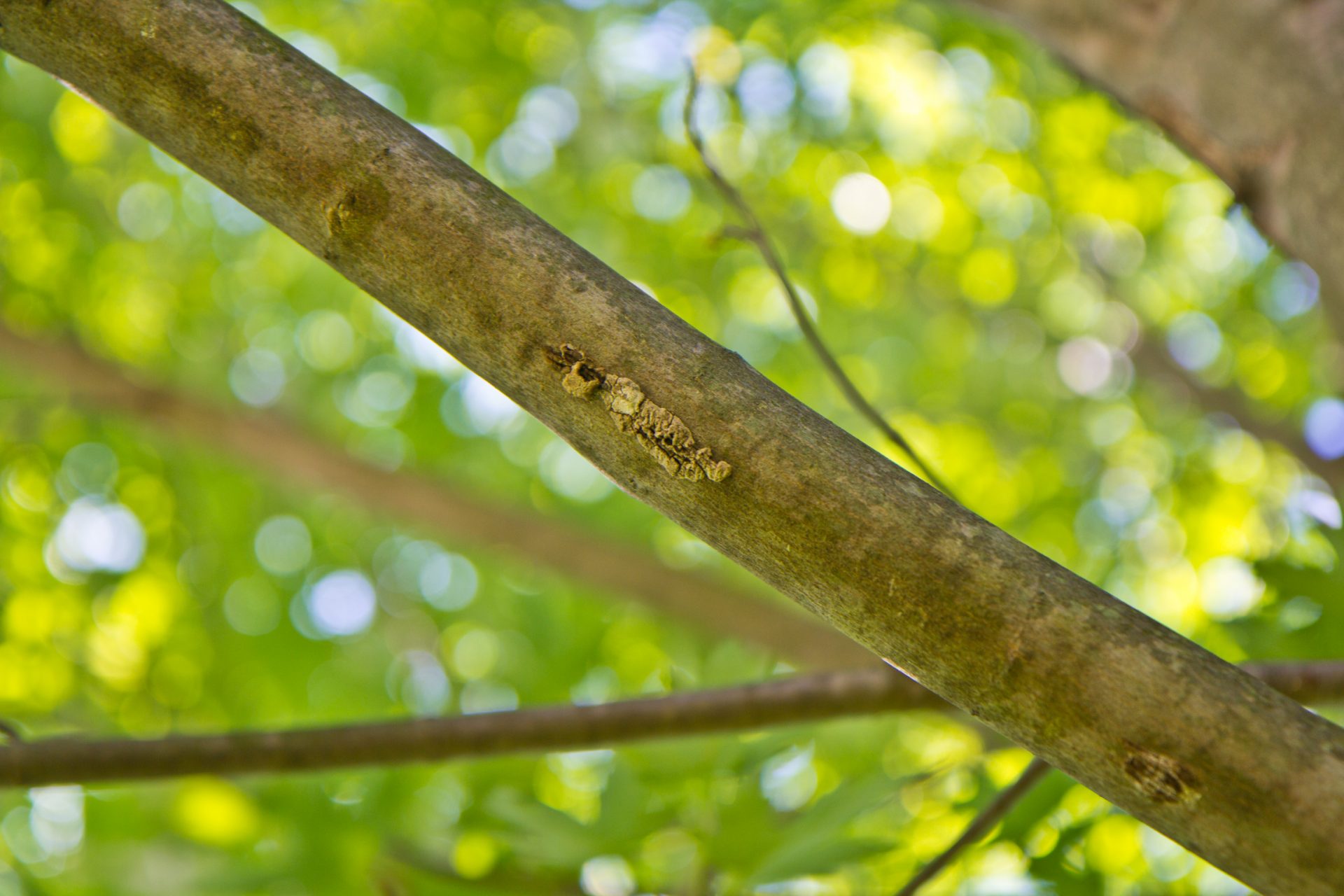
David Paar, owner of Arborescence in Montgomery County, hands out cards that help people spot the different stages of the spotted lantern fly.
Kimberly Paynter/WHYY

David Paar, owner of Arborescence in Montgomery County, hands out cards that help people spot the different stages of the spotted lantern fly.
Kimberly Paynter/WHYY

Kimberly Paynter/WHYY
David Paar, owner of Arborescence in Montgomery County, hands out cards that help people spot the different stages of the spotted lantern fly.
(Harrisburg) — Nature appears to be fighting back against a destructive, invasive insect in Pennsylvania, according to new research.
Entomologist Eric Clifton got an email in 2017 from a Penn State Extension representative, saying spotted lanternflies had been found dead and covered in fungus in a park outside Reading.
He and his team found two naturally-occurring fungi — Batkoa major and Beauveria bassiana — are infecting and killing lanternflies.
Clifton, a postdoctoral associate at Cornell University, said the fungi don’t appear to be as damaging to native insects. While collecting samples at Angora Fruit Farm and other locations around Berks County, he didn’t find any other insects killed by Batkoa major. He found just a few that had been infected with Beauveria bassiana.
“There might be a particular strain of this Beauveria fungus that does a very good job of killing these lanternflies, but it’s not killing or causing widespread death of other insects in the area.” Clifton said. “That’s our working hypothesis.”
He said it’s possible native bugs have built up a resistance to the fungi.
“The lanternflies on the other hand, they’ve never, maybe, come across these native strains of Beauveria that have been there in the environment, and so, they may be more sensitive to the fungus and therefore you see this widespread mortality,” Clifton said.

Kimberly Paynter/WHYY
Spotted lantern fly eggs that have already hatched.
Spores from both fungi infect the flies through their exoskeletons. The spores spread through the lanternfly’s body, killing it.
Since 2014, the lanternfly has expanded its territory from Berks County to 14 Pennsylvania counties. The bugs pose a threat to the state’s $18 billion fruit and timber industries.
Clifton says the findings give some hope to those looking to contain the fly.
“This is no guarantee that it’s going to stop the spread of lanternflies, it’s not going to kill all of them,” he said. “But there is a chance that it would at least help to stabilize population into the future.”
Clifton said he’s planning more research into the effectiveness of existing pesticides that contain the Beauveria fungus. He’ll also look for evidence of this happening outside of Berks County.
“We don’t really know if these types of epizootics — or this widespread death — we don’t really know if the same thing happened at different places” Clifton said. “It might have just gone unnoticed.”
The findings are published in this month’s issue of Proceedings of the National Academy of Sciences.
The days of journalism’s one-way street of simply producing stories for the public have long been over. Now, it’s time to find better ways to interact with you and ensure we meet your high standards of what a credible media organization should be.